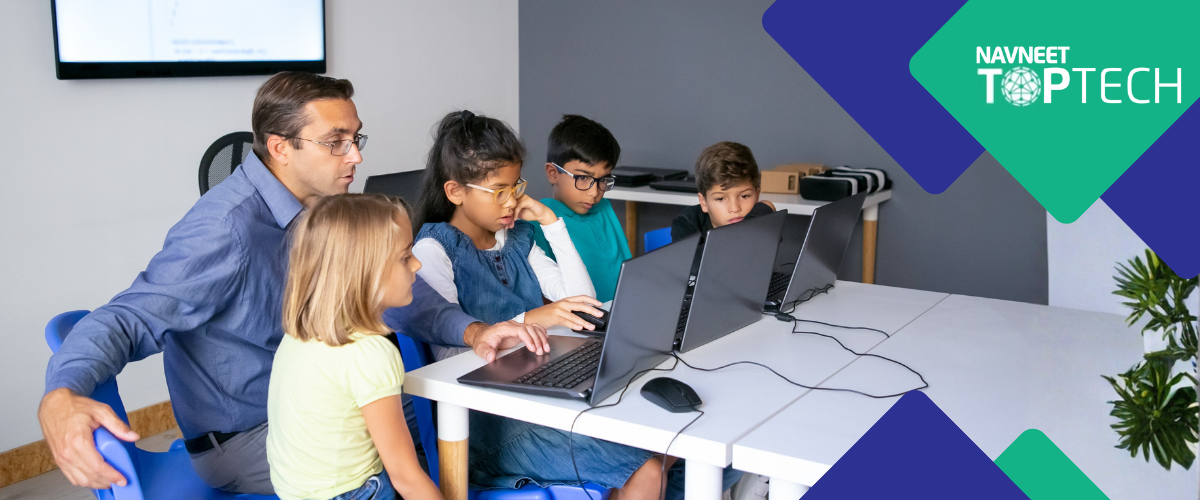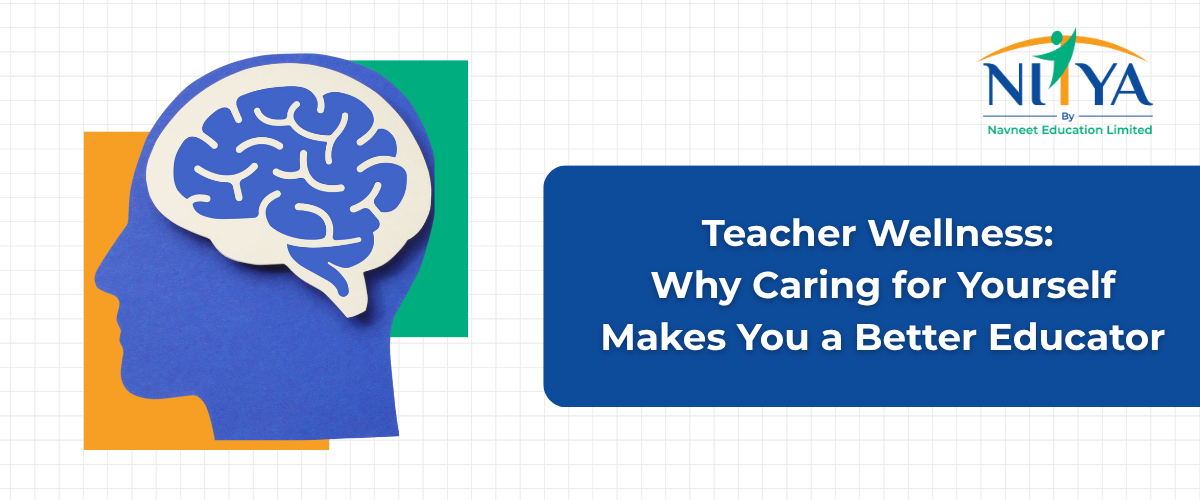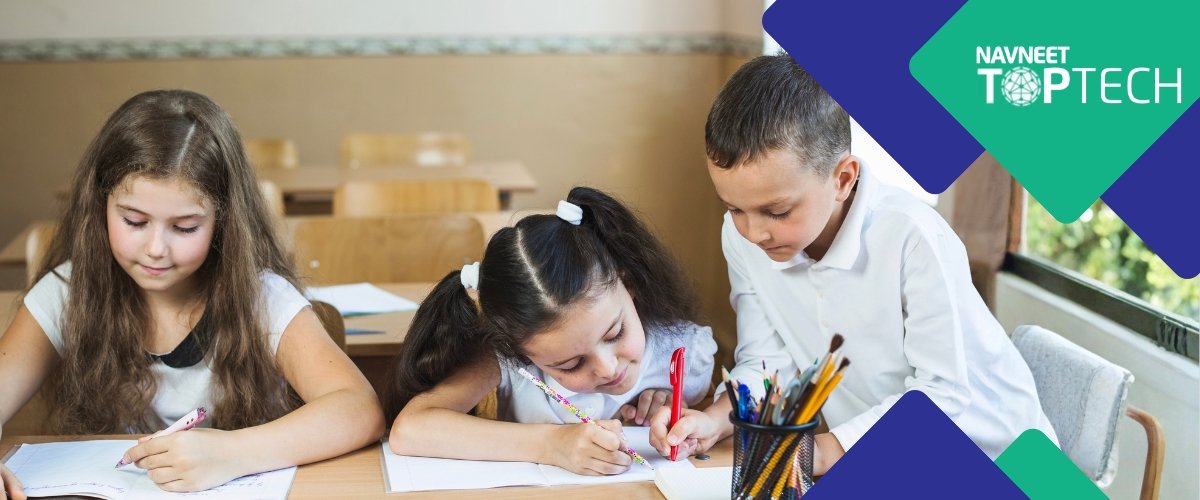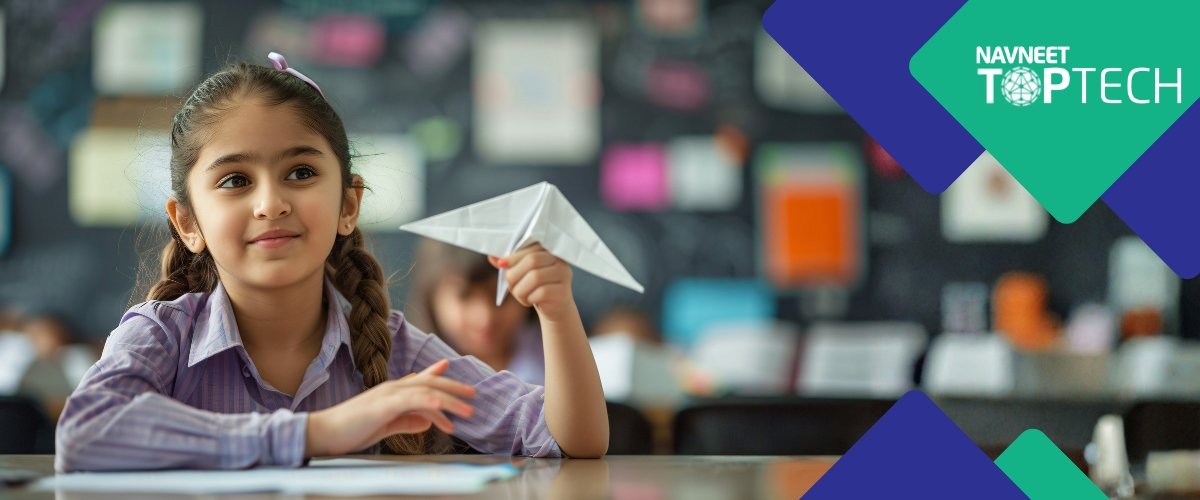Preparing for exams has undergone significant changes for Indian students over the last decade. Earlier, much of the preparation involved memorizing textbooks and rote learning. But now, exam preparation is a dynamic and interactive process, which is driven by technology.
And a lot of it has got to do with the fact that today’s classrooms are powered by smart learning platforms and digital learning solutions for schools. These tools make the education process result-oriented, efficient, and engaging.
Moreover, these advanced tools help students prepare smarter, instead of preparing harder. In a nutshell, the focus in recent years has shifted from memorizing to true understanding.
The Shift from Traditional to Smart Learning
As we said, exam preparation in India focused primarily on repetition and recall for the longest time. Teachers, on the other hand, did not have the necessary tools to measure the individual progress of students.
The new shift in education, backed by technology-driven smart learning tools, has transformed the learning system into a student-centric model that focuses on learning that is engaging. With digital classrooms, students can visualize complex topics and revise effectively, using adaptive assessments, simulations, and multimedia lessons, improving both understanding and results.
How Smart Learning Tools Boost Exam Readiness?
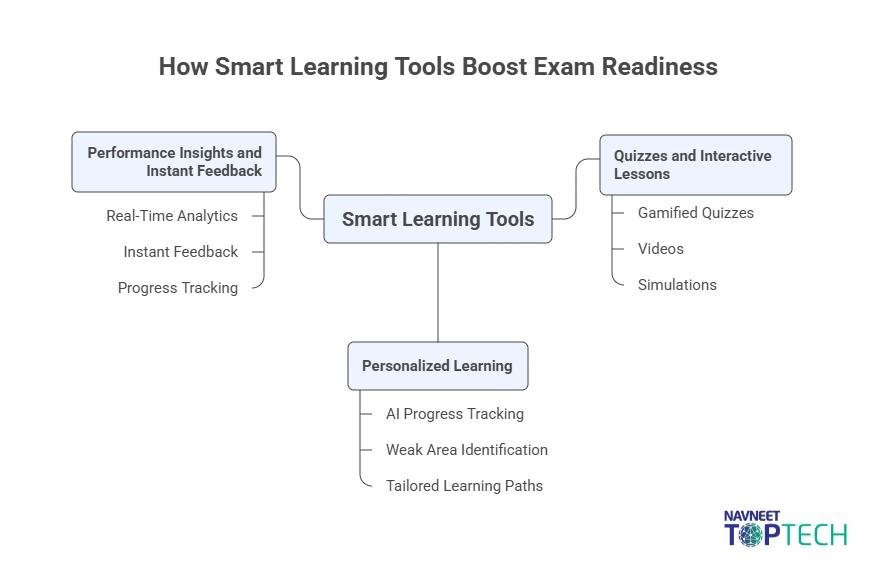
Quizzes and Interactive Lessons
As opposed to rote learning, interactive lessons turn the learning process into an engaging experience. Gamified quizzes, videos, and simulated examples help students absorb and understand the subject better.
Personalized Learning
Smart learning platforms personalize the learning journey. With technology like artificial intelligence (AI), track the progress of each student, identify their weak areas, and suggest lessons for improvement.
Note: With NAVNEET TOPTECH’s digital learning platforms, students receive tailored learning paths that ensure maximum exam readiness.
Performance Insights and Instant Feedback
This one is an important point for teachers. After all, they need to track each student’s progress. Digital learning solutions for schools offer instant analytics and feedback after every assessment, like tests and quizzes.
The Role Of Digital Classrooms in Exam Preparation
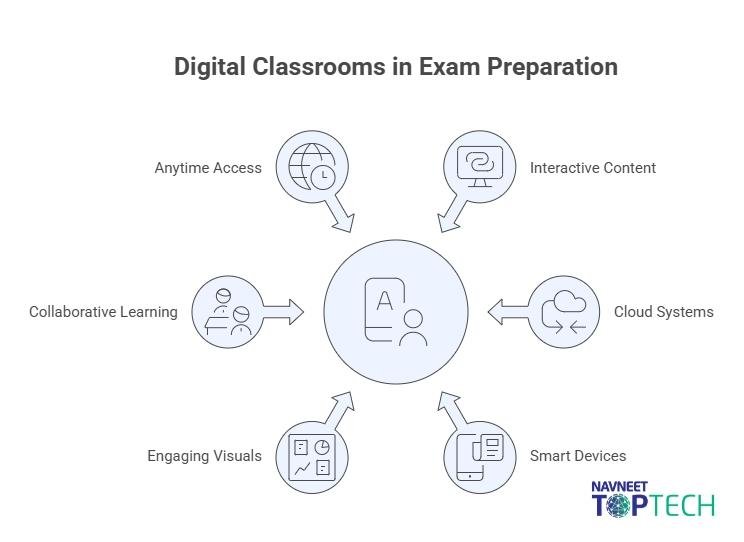
Digital classrooms bring together interactive content, cloud-based systems, and a whole host of smart devices. Together, they make way for seamless learning and teaching. In other words, digital classrooms in schools not only make things easier for students but they do the same for teachers, as well.
These digital classrooms provide:
- Visuals and simulations that make the learning process fun and engaging for the learners.
- Collaborative learning that allows group activities, helping each student to gain the practical knowledge that only comes with learning together.
- Leading up to their examinations, students can get access to lessons anytime, from anywhere. This is only possible with smart classrooms and wasn’t so in the traditional ways of teaching.
Benefits for Students and Teachers
Both learners and educators benefit from smart classrooms. Here’s a quick breakdown on how they do that:
Advantages For Students :
- Round-the-clock access to lessons and study material.
- Less stress around the exams, as there is ample room for revision.
- Visual lessons make the concept much clearer for them.
Advantages For Teachers:
- Digital lesson plans for simplified teaching.
- Real-time performance tracking that allows them to keep a tab on each student’s performance.
- Higher engagement during classroom sessions thanks to multimedia modes of teaching.
In a nutshell, digital learning solutions for schools allow students and teachers to work together to bring about better results for both of them.
Real Impact: Turning Revision Into Results
Schools that have used NAVNEET TOPTECH’s TopClass and other digital solutions have witnessed great results. In fact, they have seen tangible improvements across the learning process, including:
- Confident and motivated students who feel well-equipped to take on the exams.
- Quicker revision with interactive assessments that focus on clearly explaining the concept.
- Higher exam scores and, above all, better concept retention across students.
Smarter Learning, Stronger Results
The future of exam preparation for students lies in innovation and adaptability. With smart learning platforms and digital learning solutions for schools, education has moved beyond textbooks. And it is about time that schools across the country also move with this change.
Today, AI insights and interactive lessons are not just an advanced option. Instead, these have become necessary tools that every school must have. When it comes to exam preparation, the presence of these tools not only helps students but also makes it a whole lot easier for teachers, as well.
Tools such as NAVNEET TOPTECH’s TopClass are transforming classrooms across India into interactive learning spaces. Students in these smart classrooms are much better equipped to take on the examination season with nothing but confidence in their stride.
FAQs
1. How do smart learning tools help in exam preparation?
They turn learning into an interactive experience, allowing teachers to instantly track the students’ progress and help students focus on key areas of improvement.
2. What are the best digital tools for exam preparation in schools?
Platforms like NAVNEET TOPTECH’s TopClass offer quizzes, analytics, and lessons, which are comprehensive and perfect for exam preparation.
3. How does technology help students prepare for exams?
Technology assists in personalizing study plans, offers instant feedback, and simplifies complex concepts for students.
4. What is the role of smart classrooms in improving exam results?
Smart classrooms use interactive methods and visuals that make learning engaging. And when students are engaged, they understand the concept better and score higher in exams.
5. How can teachers use digital platforms to track student performance?
Teachers get dashboards where they can track and monitor student performance and can later modify their lesson plans based on that. Overall, it allows teachers to make the necessary changes to their teaching to help the students in the best way possible.

